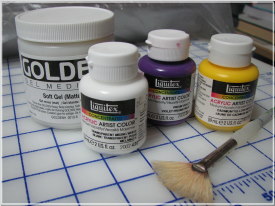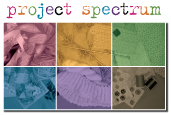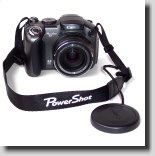
Once your first circle is completely stitched with embroidery floss, choose a secondary color of floss for your second scrim circle. I chose antique white. Fill this circle with stitches exactly as you did with the first circle.

Stitched Embroidery Floss
Don’t worry if your stitched “V” shapes vary in size. This only gives a more natural look to your flower.

Individual Scrim Flower Layers
Aren’t these little flower layers delightful? I can picture them used individually as flower appliqués embellished with some beads, a button, or French knots in the center. Since you can paint the scrim any color you like and choose from hundreds of floss colors, the variations are virtually endless.
For the flower center, you will need some thin ribbon. I chose two neutral organza ribbons. Silk would also work well. Thread a tapestry needle with your ribbon of choice, place your two flower circles one on top of the other, and pass the needle through the layers from the top side. Bring the needle back through the layers, returning to the top side. Pull to adjust the ribbon and then clip it. Repeat as many time as you like until the center is full of ribbon ends.

Ribbon Center
Since the scrim is so loosely woven, the ribbon work is relatively easy to stitch. However, as the center begins to fill, it helps to hold down the previous ribbon ends (as you stitch) so that they’re not pulled out of place.

Completed Flower Center
Mark a small circle on a piece of craft felt and cut.

Craft Felt Backing
With a light hand, cover the felt circle with fabric glue and position it on the back of your flower.

Backing and Brooch Pin
Allow the glue to dry and then attach a brooch pin to the center back. Your flower embellishment is now complete.
~~~~~~~~~~~~~~~~~~~~~~~~~~~~~~~
Rene
Time Treasured













































